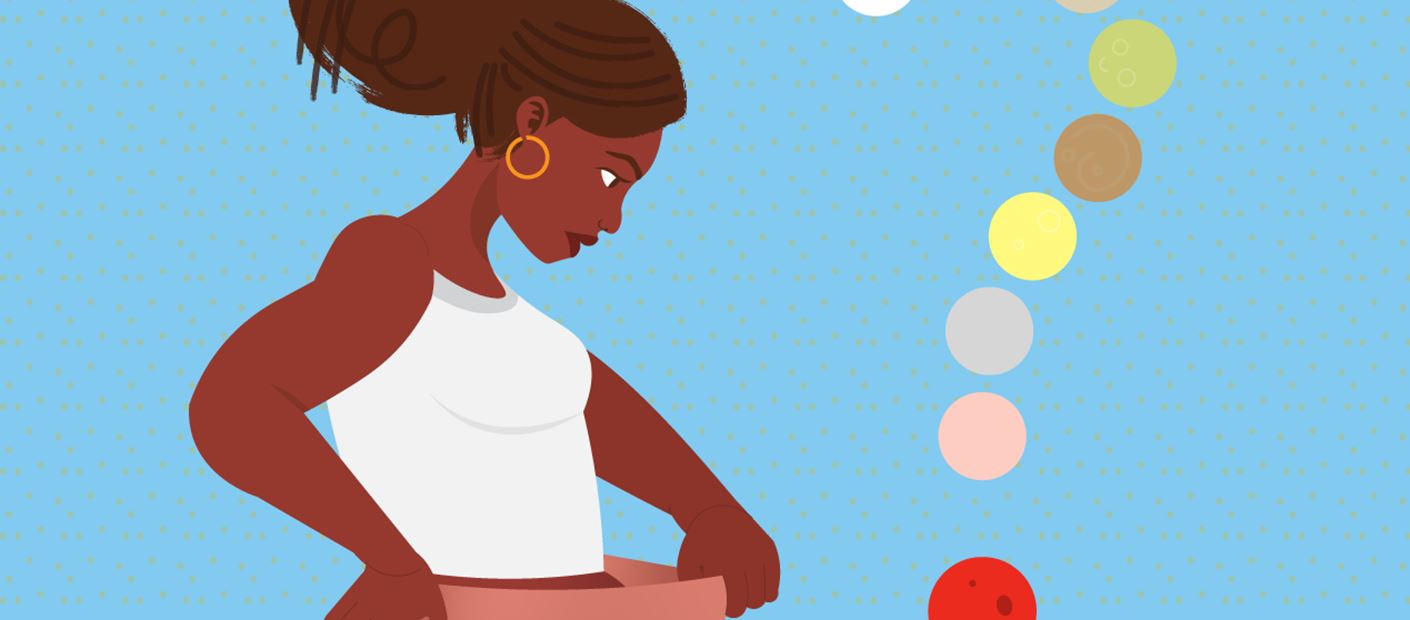Female condom
Providing both pregnancy and STI prevention

A short-acting method of contraception
The female condom is a barrier contraception method for preventing pregnancy and STIs.
When used correctly, condoms are highly effective. Condoms are also the only contraceptive method that protect against both pregnancy and sexually transmitted infections (STIs), including HIV and syphilis.
Condoms have to be used correctly every single time you have sex to be effective.
Frequently asked questions about female condoms
There are several types of female condoms available in the market. Generally they come with an inner and outer ring.
– The inner ring is squeezed together and inserted into the vagina while the woman is in a squatting or lying position with her legs spread. The longest finger should then be used to push the ring as far into the vagina as possible.
– Some of the condom will hang and be visible
outside of the vagina.
– Before sex, hold the edges of the condom against the outside of your opening when the man enters to ensure the condom does not get pushed inside during the sex act.
– Also make sure that the penis is inside the condom and not between the condom and the vaginal wall.
– After sex, pull the condom out carefully to avoid anything spilling out. Tie the end of the condom and dispose of it in a rubbish bin, not in a toilet (as it may cause blockage).
The female condom works reasonably well at preventing a pregnancy but its ability to stop a pregnancy largely depends on the person using it properly.
In a perfect world, if one hundred women used the female condom properly every time they had sex and carried on with their normal sex life then five of those women would fall pregnant during that period. But, with typical use up to 21 women out of 100 would fall pregnant.
– You only need to use condoms when you have sex
– If they are used for any type of sexual activity then they help to protect against most sexually transmitted infections, including HIV
– A female condom can be put up to 8 hours before sex and thus does not have to affect the spontaneity of sex. Also, because the female condom lines the inside of the vagina, the penis does not have to be withdrawn immediately after ejaculation
– In general female condoms do not cause an irritation to either the vagina or womb. The majority of female condoms are made from a substance called polyurethane, which is non-latex and therefore is safe for those who suffer from a latex allergy
– It can be used straight after an abortion.
– Female condoms can sometimes get pushed completely inside during sex or come out, which is why they are not always as good as some other forms of contraception and may require some practice to use correctly
-If the condom breaks or tears, pushes inside or falls off then you may need to use an emergency contraception immediately afterwards.
If your condom breaks or slips off, you may need to use emergency contraception to prevent pregnancy. Please note that as well as pregnancy, unprotected sex can put you at risk of STIs.
Ready to book?
If you’re ready to visit us, book an appointment to reduce your waiting time at the clinic.
Find a clinic that offers female condoms and related services.

Why not get an STI test while visiting a clinic?
Something you should consider along with our condom service is an STI test to ensure your body is safe before you try this contraception method.
Read our latest articles
Find your best fit
If you’re unsure what method is best for you, take our online contraception quiz.

Other contraceptive methods
We offer a range of contraceptive and sexual health services to suit you
















